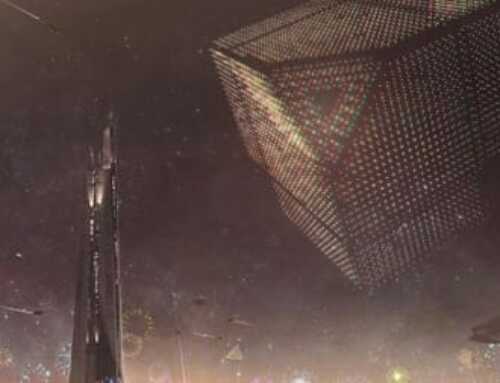Flowing Lights is a top-down sci-fi shooter with major puzzle mechanics. Like many indie games, it has one foot in retro gaming, the top-down arcade shooter in this case, while innovating with new mechanics. It also pays homage to 80’s sci-fi in general, borrowing much of its aesthetic from the era’s sci-fi films. I played the Switch version, but Flowing Lights is also available on Steam.
PLOT:
Like the arcade shooters Flowing Lights takes clear inspiration from, there is next to no plot. What minimal plot there is comes before the game even begins, a simple text box telling the player they are trapped on a planet with an abnormally high gravity field. To escape the player must reach one of the planet’s magnetic poles. No further plot or world-building is provided, but it’s also not necessary.
GAMEPLAY:
The core mechanics of Flowing Lights are fairly simple and straightforward. There’s a rapid-fire, short-range gun, a dash, and a long rang charged shot that works like a slingshot. However, these simple mechanics are augmented by the gradual introduction of additional mechanics. One of the most important is the use of gravity as most stages are littered with gravity wells, hills, and sloped walls that bend bullets and serve as obstacles.
While the dash and primary fire feel very at home with more fast-paced levels where hundreds of bullets are flying across the screen, the charged shot is central to the game’s puzzle mechanics. This shot gives you an arc line, showing you where the shot will go. Many levels require using its gravity mechanic and this precise shooting to shoot around obstacles or take out multiple enemies at once.
PROS:
Flowing Lights’ greatest strength is its sense of style. The levels are brightly colored, lined grids similar to Tron. Both your own ship and the aliens you encounter look light neon sea creatures, and each shoots color-coordinated bullets. As a result, battles look like laser light shows. While this might sound chaotic and hard to track, the color-coding and simple grid environments make it much easier to dodge shots than other bullet hell games.
The soundtrack also manages to thread the needle when it comes to keeping its retro sensibilities while still feeling fresh. Its moody, synth sound feels like something out of Blade Runner. It’s simple enough not to be distracting for the more puzzle-focused portions of the game but engaging enough to feel appropriate when you’re dodging between streams of neon bullets.
CONS:
Flowing Lights tries to bring two very different genres together and it never quite gets there. When a level commits to arcade action, or thoughtful puzzle-solving it’s great, when they try to do both it falls apart. While the charged shot is great on the slower, more thought-provoking levels many of the action-packed levels also require using it. The problem is stopping to arc a shot just perfectly isn’t compatible with dodging through a stream of bullets. Many times I found myself blindly lobbing shots in the enemy’s direction until I got in a lucky shot. This process doesn’t feel like fun action or satisfying puzzle-solving.
The charged shot also felt clunky when using a controller. While the mechanic is still functional, and I had a better experience once I started using the D-pad, it never felt quite right. The mechanic feels like it was designed for the mouse and while I haven’t played the PC version of the game I’d imagine it feels much more natural there.
VERDICT:
This game is a classic example of an indie dev trying to do too much at once. The aesthetic is fantastic and the gravity mechanic would be an interesting wrinkle for a dedicated puzzle game or top-down shooter. Unfortunately, the attempt to combine both genres never quite clicks. There are legitimately fantastic, memorable, levels but they are outnumbered by the tedious ones. The game is certainly worth its $10 price tag but ultimately Flowing Lights is too uneven to be considered great.







